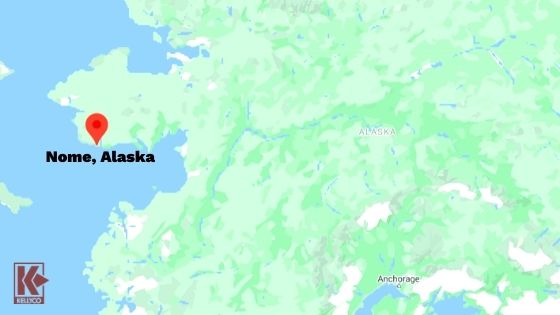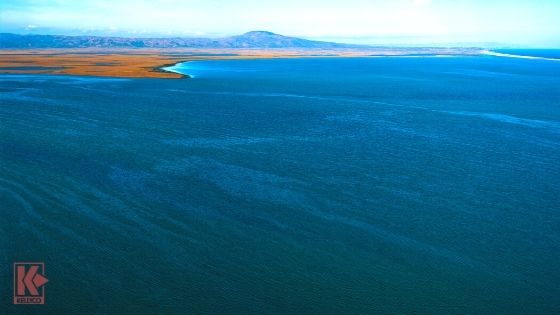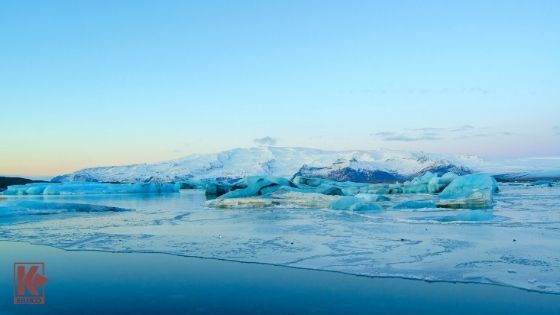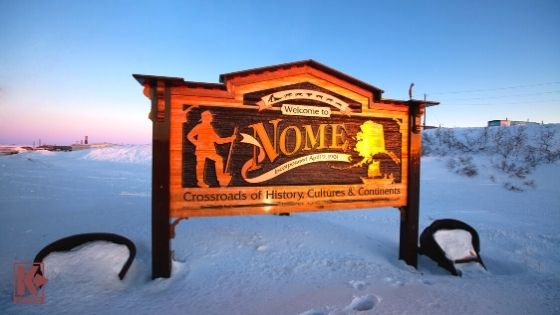The Nome Gold Rush and Three Lucky Swedes
Published by Sam Jacobs on 10/23/20
The California Gold Rush certainly was in a far-off land for the Americans of the time, who had to trek long distances to get to their final destination. But the 49’ers had nothing on those brave adventurers who went to Nome, Alaska to seek their fortunes in 1899. This brings us to the Nome Gold Rush.

Nome, Alaska
While Nome, Alaska was owned by the United States at the time of the Nome Gold Rush, it might as well have been Mars, both in terms of getting there and in terms of surviving in the harsh and unforgiving climate. Despite the apocryphal quip often attributed to Mark Twain, that the worst winter he ever saw was June in San Francisco, there is simply no comparison between a miserable Northern California summer and any day of the week in Nome, Alaska.
Nome is not simply in Alaska, it is in a more northern part of the state. It is more than 60 degrees north of the equator (64°30′14″N to be exact), which puts it about 100 miles south of the Arctic Circle. It wasn’t the only gold rush in Alaska — there was also the Fairbanks Gold Rush — but it might hold the title for the biggest gold rush at the northernmost latitude.
It was the Nome Gold Rush that made Nome the largest city in Alaska for a period.
How the Nome Gold Rush Started
Alaska is known for many things, one being a popular vacation choice. However, Nome started off as a small outpost at the outlet of the Snake River on the Seward Peninsula, which is part of the Norton Sound on the Bering Sea. Prior to the settlement at Nome, Inupiaq Eskimo used the area as a camp dating centuries prior to the arrival of Russians in the area. The Port of St. Michael, about 125 miles southeast of Nome, was founded by the Russians for the purposes of sailing down the Yukon River. This area quickly became a popular destination for whalers and fur traders. Russian Orthodox Church missions began in the 1880s. Council, Alaska was the place where gold was first found a year before it was found in the Nome area.

Bering Sea Coast
The first men to strike gold in the region are known to us by the sobriquet “the Three Lucky Swedes.” These were Jafet Lindeberg (who was actually Norwegian-American) and Swedish-Americans Erik Lindblom and John Brynteson. We will talk more about these men and their fascinating life stories later in this article. The short version is that three men struck gold on Anvil Creek and founded what is now the Nome mining district. Their discovery quickly spread throughout the surrounding camps during the winter, leading to an influx of 10,000 fresh from the Klondike Gold Rush which began three years prior.
In 1899 there were significant amounts of gold found in the beach sands around the Bering Sea coast. By 1900 there was a tent city along the beach that stretched 30 miles from Cape Rodney to Cape Nome. This only accelerated the influx of treasure-seekers into the region. The spring of 1900 saw arrivals from San Francisco, Seattle, and Portland into the area aboard a newly vibrant steamship line running to the Nome region. People came from much further than the Pacific Northwest and Northern California, coming all the way from Adelaide, Australia aboard Inca, a schooner, in 1902, the maiden voyage of this ship.
The Nome Gold Rush was also more contentious than other gold rushes in the United States. “Claim jumpers” came onto the land, upset that all the best land had already been taken by earlier arrivals. They attempted to file claims for land that had already been claimed by other gold prospectors. The federal judge for the region decided to recognize the original claims at the expense of the claim jumpers, but the claim jumpers began offering a segment of their land to influential politicians.
How Mining Worked at Nome
There were two main locations for mining during the Nome Gold Rush: the beach and the creeks.
The beach presented a unique problem for prospectors in the region: The beach could not properly be claimed like the rest of the land around Nome. This created tons of problems because there were literally tons of gold on the beach. Much more, in fact, than what was available in the nearby creeks.

Frozen Seawater
As is often the case, the first gold found on the beaches of Nome was simply panned out of the water. There was that much of it around. By the summer of 1899 people were using human-powered machinery to get it out, such as sluice boxes and rock crushers were present. The next year things got a bit more industrialized. Small machines utilizing hoses and pumps began to show up. By 1902, the big companies had taken over and small claimants and prospectors had virtually all disappeared, bought out by bigger interests who were much more capable of getting the harder to reach gold out of the ground than they were.
There was a very short window of time every year when the beaches could be worked — June to October. This is because Nome is so far north that even seawater will freeze during part of the year, making gold mining impossible. What’s more, the local police would chase off anyone who wasn’t adequately prepared for the harsh and unforgiving winters of Nome.
The creeks were less lucrative because not only are they cold, but they run slowly, making panning a much more labor-intensive form of gold mining than it is anywhere else in the world. At the creeks there needed to be special equipment to thaw the ground and suck up all of the gravel. Mining the creeks in Nome was more a question of quantity than quality. The more gravel you were able to suck up the more gold you were going to find. It was a numbers game. Sluices, gravity, and suction were the main ways of doing this. Gold dredges and mine shafts were also used, but in far less abundance then they were in other places that didn’t have frozen ground most of the year. Steam was used both to soften the ground before the actual mining as well as to collect the gravel during the winter months.
Nome: Alaska’s Gold Rush Boom Town
Gold rushes always have a massive economic impact on the surrounding areas and the Nome Gold Rush was no exception. What once had been a tiny, insignificant settlement in a backwater of America often referred to as “Seward’s Folly” to reference what was thought to be an imprudent purchase of the land by Secretary of State William Seward, was now a bustling metropolis fueled by the gold rush.
Before the gold rush, there was virtually nothing to be found in the area. After the gold rush, in 1905 there was just about anything one could want out of their community: schools, churches, saloons, a post office, and multiple newspapers. Even some of the nation’s earliest automobiles started showing up in Nome in short order and would drive down the planks on Front Street. America’s first wireless telegraph that transmitted more than 100 miles was in Nome. Telegraphs were relayed to St. Michael on their way to Seattle.

Welcome To Nome
Strangely, there was no harbor for large ships during this period, only one for small boats. This isn’t to say that there were no ships coming within striking distance of Nome. Indeed, we have already mentioned one by name – the Inca from Australia. What would happen, however, is that the larger ships would stay out at sea and the people would be ferried to the mainland via smaller boats. This is because of the ice around the area that rarely ever melted, making a direct approach a dangerous endeavor indeed. Sometimes passengers were delivered to the ice itself, then brought ashore by teams of dogs.
In 1901, the town got a loading crane which certainly made life easier for those who were still mining gold. By 1905 there was a wharf. In 1907 the town got a tramway.
The Nome Gold Rush Winds Down
Gold is, of course, a nonrenewable resource and like all other gold rushes, the Nome Gold Rush eventually played out, meaning that individual prospectors could no longer profit from the gold deposits and had to either look for gold somewhere else or sell the claims they had to larger commercial interests capable of large-scale industrial mining projects.
In 1904 and 1905, gold was discovered on other parts of the beach which made for a sort of mini gold rush that boosted the main one and extended its life. However, none of these new strikes had nearly the same amount of promise as the original. Between 1900 and 1909, Nome was 20,000 strong but by 1909 the population had dropped to a meager 250.
Gold mining still takes place in Nome and, indeed prospectors continue to show up looking to strike it rich in Alaska. We’re not sure how many people have struck gold in Nome, but we do know of at least three men who made an absolute killing: The Three Lucky Swedes.
Who Were The Three Lucky Swedes?
The Three Lucky Swedes were indeed lucky. What else would you call three men who basically tripped over a king’s ransom in gold?
First, there was Norwegian Jafet Isaksen Lindeberg. His experience in Nome was not the first time he found himself prospecting. Indeed, he was a gold hunter from a very young age, looking for gold in northern Norway during his childhood. He first found himself in Alaska after the United States Congress stepped in to provide some direction during the Klondike Gold Rush. Congress feared a famine or other humanitarian disaster and sought reindeer handlers to ensure the smooth delivery of goods into the region.

Prospecting Gold
Lindeberg was one of these reindeer handlers. He was recruited in Norway and set sail for the states aboard the SS Manitoba on February 4, 1898.
Erik Lindblom wasn’t a prospector, but he was from the iron and copper mining region of Sweden, which gave him a working knowledge of mining. He left Sweden at 17 and was involved in mining in Montana, Colorado, and Idaho before he found himself in Nome, Alaska. He became a naturalized citizen in 1894.
Finally, there was John Brynteson. He came to the United States from Sweden at the age of 16 and worked in copper and iron mining in the Upper Peninsula of Michigan. He gained his American citizenship in 1896. He came to Alaska under the auspices of the Swedish Mission Covenant.
These three men began hunting for gold together in mid-September 1898. They quickly happened upon what they knew was a major discovery. Together, they formed the Pioneer Mining and Ditch Company, which quickly became Nome’s biggest mining company.
Brynteson left Alaska first and was the only one of the three to return to Sweden. Lindblom took his gold profits and invested it in several sectors, including banking, real estate, and transportation. He eventually became the president of the Swedish-American Bank of San Francisco. He personally financed the construction of the ice parks in Stockholm for the 1912 Olympiad. Lindeberg’s life was mostly uneventful after Nome, but while there he was part of a group of masked vigilantes who attacked claim jumpers in an attempt to retain his property.
You can still visit the Camp Nome mining district, which is a historical tourist attraction in otherwise sleepy Nome. There aren’t even 4,000 people living in the Nome area these days, less than a quarter of what was there at the peak of the Nome Gold Rush. But for one shining instant, this little fishing village on the coast of Alaska became the hottest destination in the world for the most adventurous men alive.
